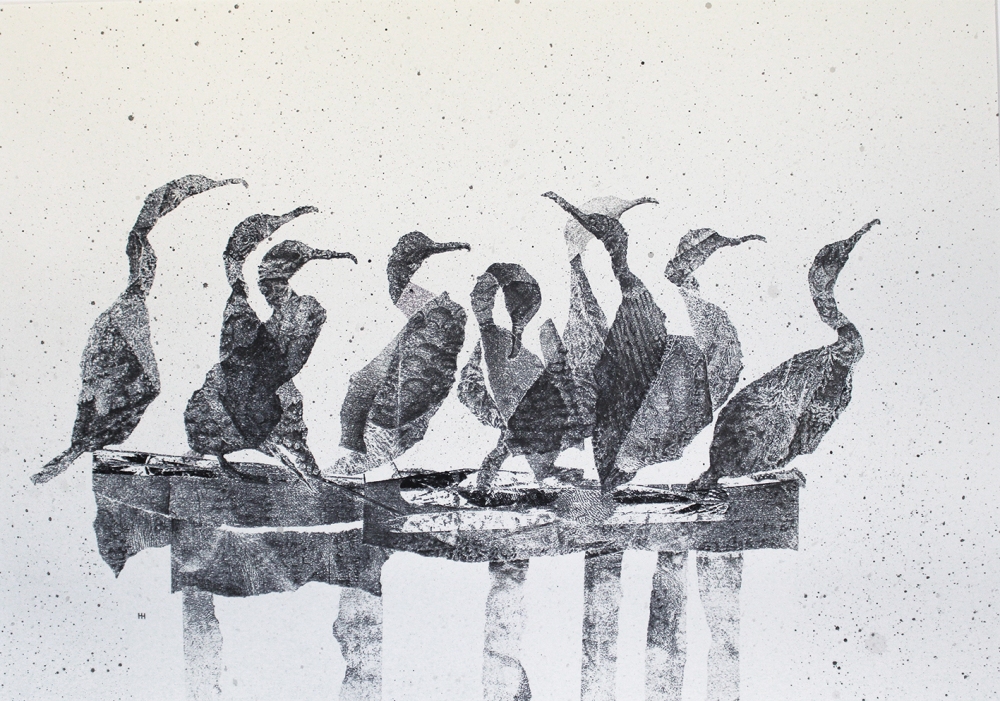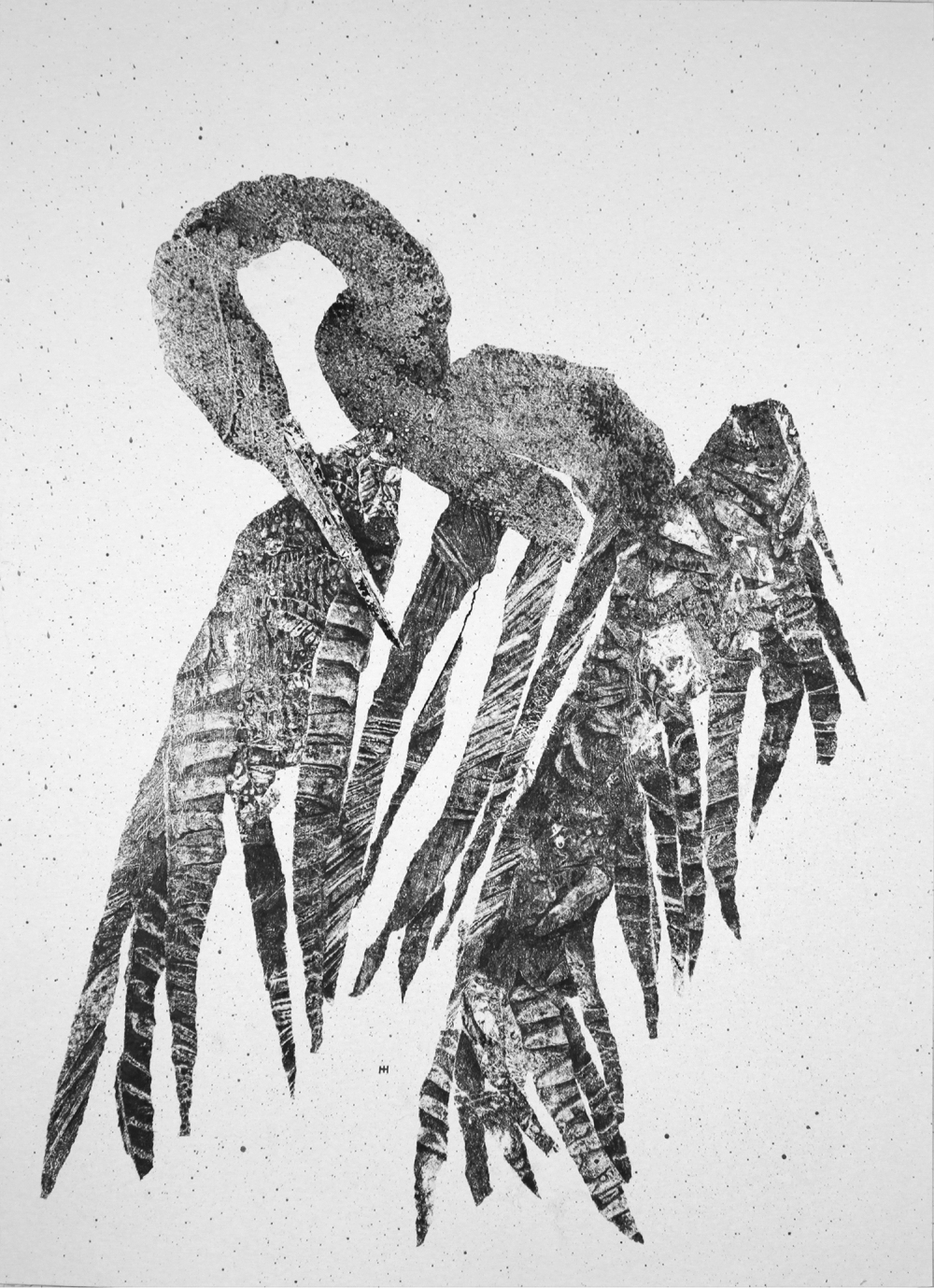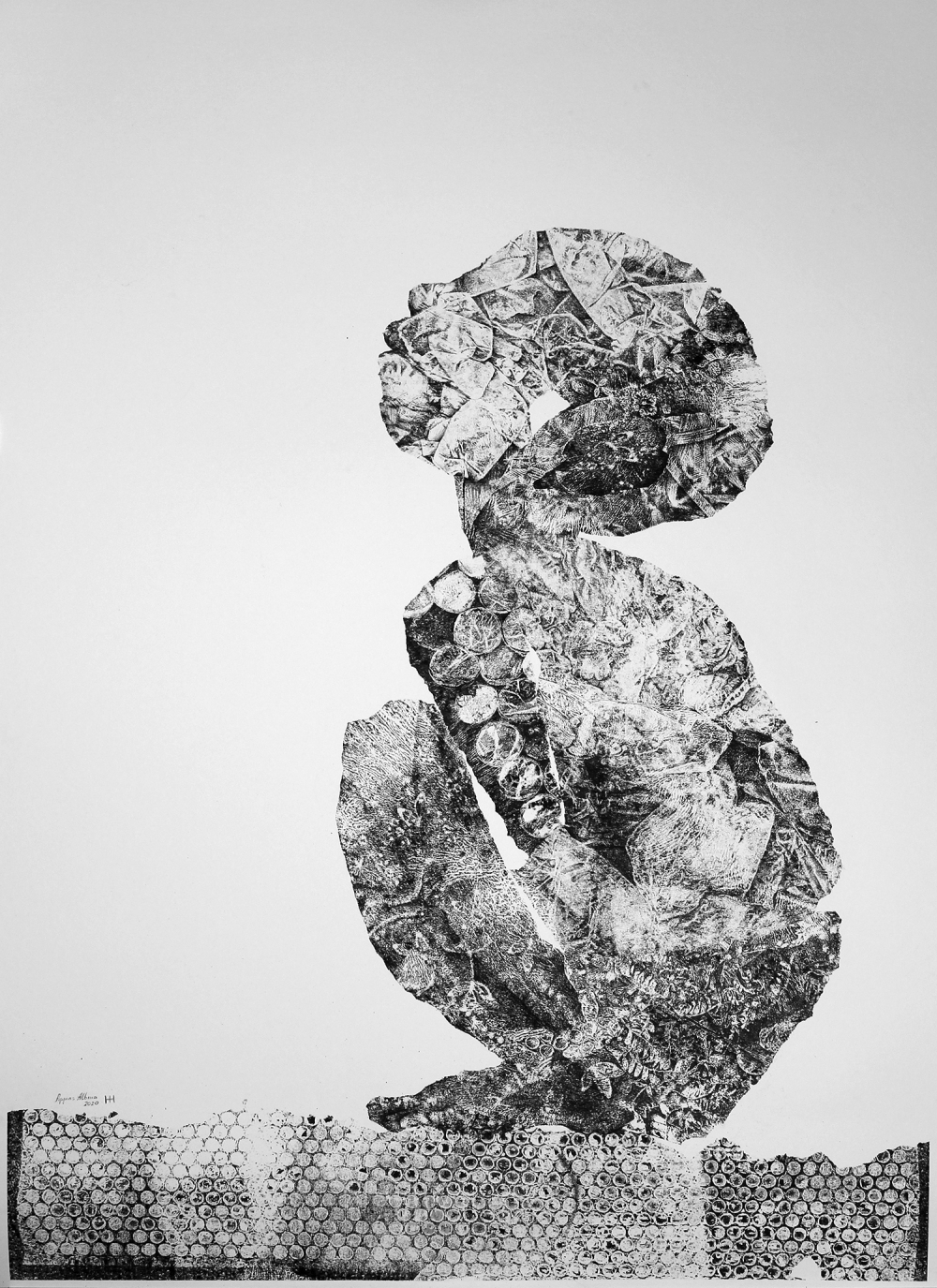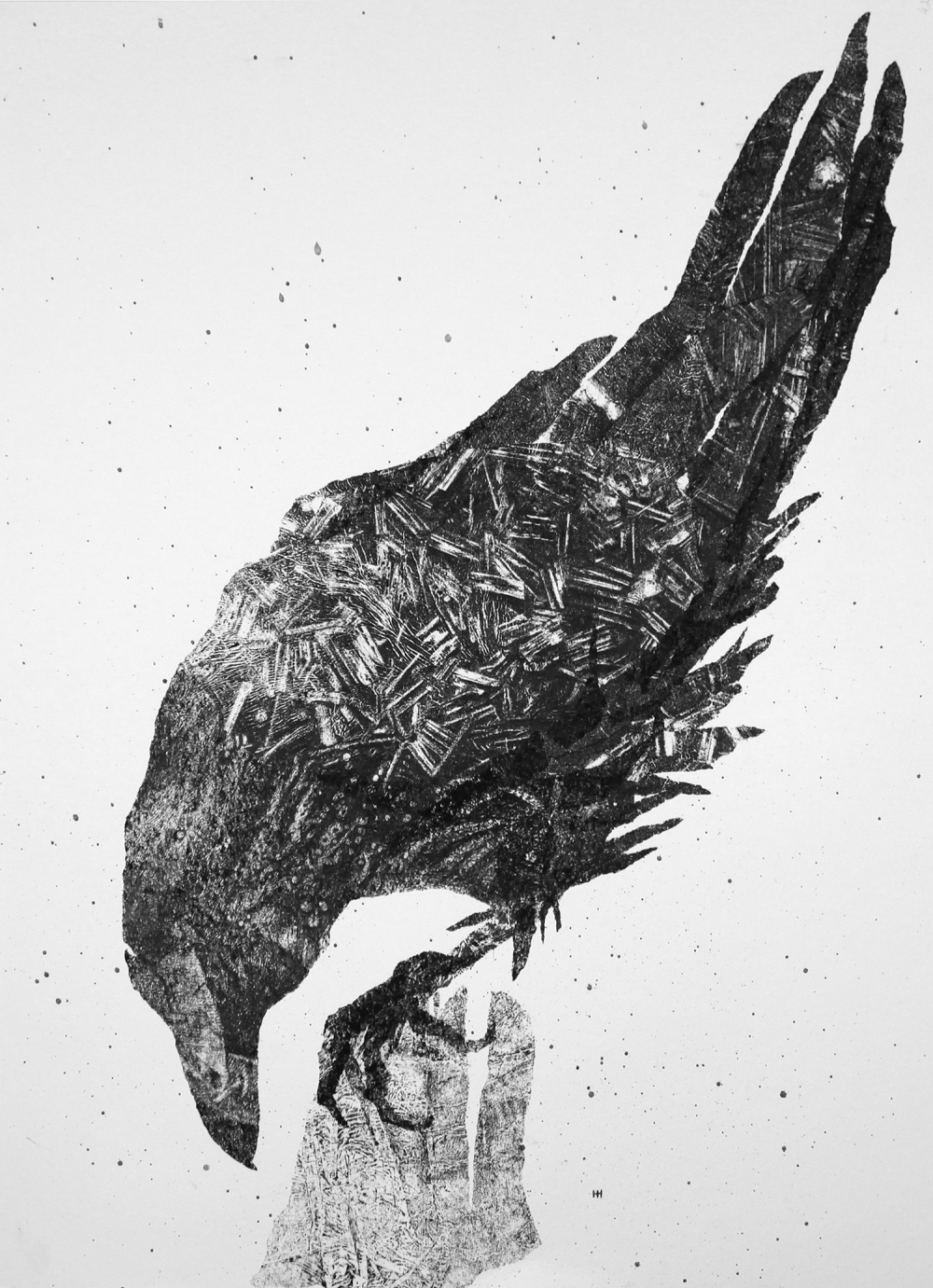Jevgenija Jones, known by her artistic name, Appias Albina, dreamed of being an artist since she was a young girl. Born and raised in Vilnius, Lithuania, Jevgenija graduated from the Academy of Arts and went straight into making art. On top of that, she also worked as a jewellery maker, graphic designer, illustrator and audiovisual collaborator. Although she has done many things before, drawing and making art has always been her first love; her ‘colourful’ background has been an advantage while approaching her art. Jevgenija continues to inspire her trend towards examination and experimenting within the art world.
The artist’s central subject of art is nature and animals; she always tries to capture the harmony of movement, the bodily aspect and the essence of the object Jevgenija creates. She sees the art as a place where she can make her own rules; she also makes unusual choices of patterns and technique, bringing a contemporary approach to the classical genre of her visual tales.

Photo © Appias Albina
Before discussing the scope of your artwork, was art and being an artist a path that always called out to you?
I always wanted to be an artist, but, honestly, I never thought that I would find myself in graphic art. This happened quite by accident, and at the same time it was surprisingly natural.
I started with design, graduated from the Academy of Arts and worked in the field of graphic design and decoration. Many projects were associated with visualization and branding of music and sound, and I still love to work with it and collaborate. But my main passion and business gradually became graphic art. Here, I created my world with my rules and I think it is the most wonderful feeling that you can get as an artist.
The central subject of your work has often been nature and animals. How long does it usually take to create an art project?
I never “grow” only one artwork at a time, I always run a few projects at the same time, so it is difficult to count. It is mostly because of a few very different stages of the process.
One part is to collect the textures. I go to fields and forests, picking various herbs, leaves, feathers. In attics and basements, I look for old clothes, textiles, paper, nets… I collect everything to capture textures from these things on tracing paper for my “black textures palette”. This never happens on the same day as creating an object directly on a piece of paper in my studio. Creating monotype is a very quiet and meditative process. I tear piece by piece from my “textures palette,” laying out a form. I like to mix textures, creating visual noise inside a strict form. It takes time and concentration, given that I can only see the textures and patterns against the light, like x-rays. It sometimes takes a day, sometimes more. But the most important thing is that the technique is capricious; a lot of it is out of my hands, so I am usually only happy with every second monotype only – I delete all monotypes which I am not satisfied with. But if all is well, then a little correction remains and everything is done.

Photo © Appias Albina
And why did you choose carbon copy-paper as your main material to work with? You use the monotype technique in your creative process, could you tell us more about it?
Carbon monotype is a unique technique. At the moment, it could be that I am the only one who is working with it professionally, or at least I have not met or heard of anyone except me (and someone who learned it from me) using it with a hot iron professionally.
Carbon copy-paper appeared in my hands by accident. It all started with my mother, a bookkeeper, who once said “I have a box of old unnecessary carbon paper lying around. Do you need it?” So, this box of carbon copy-paper stayed at my place. From time to time I experimented with it because there was almost no information on the Internet about what can be done with it, other than its intended use. For about 10 years I was exploring it, considering the possibilities, and hoping to find some more information on how I could use this amount of carbon copy-paper. I was sure that somewhere there is a whole community (or at least a Facebook group) of artists working with it. But there was no one. So, I began to go out and introduce the carbon monotype technique through my works to the world.
Looking at your art as a whole, which is more important to you: the subject of your art or the way it is executed?
I really like the process, especially since the technique constantly surprises. I only fully control the shape – the silhouette – and not the number of details that appear in it. The amount of carbon on the paper depends on many factors, such as the heat of the iron, the pressure, the texture it holds, and so on.
The most exciting moment of the whole process is when I remove the carbon paper from the monotype after the final ironing – this is the moment when I first meet my creation face to face – it is always amazing, exciting, or disappointing! I never know what I will get as a result. Thus, it turns out that for me the process, the way of execution, is more important and interesting than the subject or topic behind it. But for the viewer, the object and theme of the work is already fully disclosed and is a more important part than how this was done. Most people cannot even guess the process.
When you create your art projects, is there a deliberate message present from the very beginning?
At the beginning of the journey I only choose the direction, the story is created along the way. I never set myself a conceptual goal when I start creating a picture, it comes later. It is the details that I cannot fully control that determine the narrative, and they reveal the full meaning. The work is created by itself in my fingers, and I release it, emphasize the necessary details and tell the story that is going to accompany this work further along its path.

Photo © Appias Albina
You have various exhibitions under your belt, not only in your native home of Lithuania, but also in Estonia, Russia and Latvia. How did the opportunity of showing your art abroad come about?
Largely thanks to social media. I post a lot of processes and final works on Instagram, where I meet the most interesting people from all over the world. I have many wonderful contacts, and communicate a lot with artists, art lovers, and other creative people online. This leads to some exchanges, invitations, open calls; some galleries and organizers having invited me once, begin to invite me regularly, so it is like a snowball rolling down the hill… But the first step was to show my art and to invest time and energy in sincere communication with people.
Looking at your past and present projects, when you complete your work, do you remain attached to it or is there a catharsis with detachment present at the end of the project?
I become attached to my works, especially if they remain in front of me for a long time. This is interesting because even if I don’t quite like the finished piece, when it stays at my place it seems to slowly begin to sprout with all of its sprouts, to take roots. It becomes a completely independent organism, and what seemed to me to be a flaw, often after a while becomes a feature of this artwork. As in a freshly planted garden, at first you see the gardener’s idea, but if you remove the gardener and give it time, the precisely thought-out forms begin to be buried in the bindweeds, covered with small colourful flowers. The garden comes alive with birds. I like to see how my work continues to grow when it finds its place in other houses, and grows into walls. It’s beautiful.
To what extent do you think your surroundings shaped you, creatively speaking, and in what way?
The atmosphere around me greatly influenced what I give away now. I was born and raised in Vilnius, and started traveling a little later in my life. Therefore, the first thing that was laid in me in childhood and as a teenager was what surrounded me, for example, the atmosphere of my old city. This is a special, multi-layered, historical environment, and in childhood it was less reconstructed than now, often exposing itself to the bone. I have always madly-loved abandoned buildings, with all of their textures. I loved exploring these spaces, listening, touching, feeling… I always collected various rusty fragments of past lives. My pockets and hidden corners of my room were always full of all kinds of little artifacts, textures and noise of the past found on the roads, in old buildings, in attics. On the other hand, there were forests. I lived on the outskirts of the city, and the forests were very close, and I loved to walk there, soaking it in like a sponge. I usually disappeared there with my dog, in natural silence, at any time of the year.
These are perhaps the two main things, but there were many more – books, Natural History encyclopaedias, Baltic mythology with endless spirits, design, various external changes and shocks that triggered personal growth. Now everything that has accumulated then just beats a fountain from me, mixing into one.

Photo © Appias Albina
The definition of art is open, subjective, and debatable. There is no agreement among historians and artists, which is why we are left with so many definitions of art. The concept itself has changed over centuries; how would you define art yourself? What does art mean to you?
For me, art is a special, sometimes anonymous, and sometimes a one-way channel that transmits an emotional message without connecting the sender and receiver. This channel sends messages randomly, it disregards geographical, temporal, and even civilizational distances. The artwork doesn’t have or need to have any practical use, it is just a shape for an energy it holds.
There are people who need to discharge emotionally with the help of art, give energy, send, and there are people who need to take it. The artist lays down the idea, meaning, emotion, conveys the message, but may never meet the one or those who receive this message, they do it mostly for themself. The one who perceives art also has a connection with the work, but this does not mean that they have any connection with the artist. The artwork, as an energy, continues in the one who keeps it in their memory.
What else are you currently working on and what do you hope to achieve after the Coronavirus pandemic ends?
In general, quarantine changed a lot for me. A vacuum was formed, and many plans simply vanished. But I haven’t had a chance to just sit down on the sofa yet; a lot of new ideas appeared, completely new plans, and a lot of new amazing connections.
I am currently working on a large new series of works. They are new to me because I go beyond my usual format in both size and theme. This series will be largely composed of diptychs and triptychs. Also, people and botany have been added to my usual themes of the animal world. So, it will be a special, new series. This is really an interesting moment for me, created in the void of quarantine. A lot of comprehension. The project has been financed by the Lithuanian Culture Council, and it has already outlined its first tour in one magnificent gallery in Lublin (Poland) in 2021. And I believe this is only the beginning.
Written and interviewed by Maggie Gogler
All other photos © Appias Albina
Photos of the artist, including the featured photo © TwoSidesPhotography
